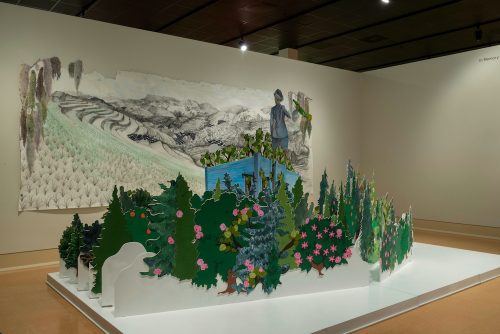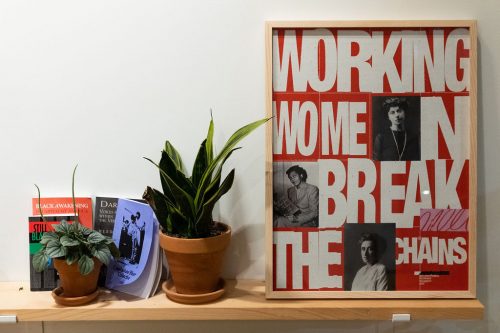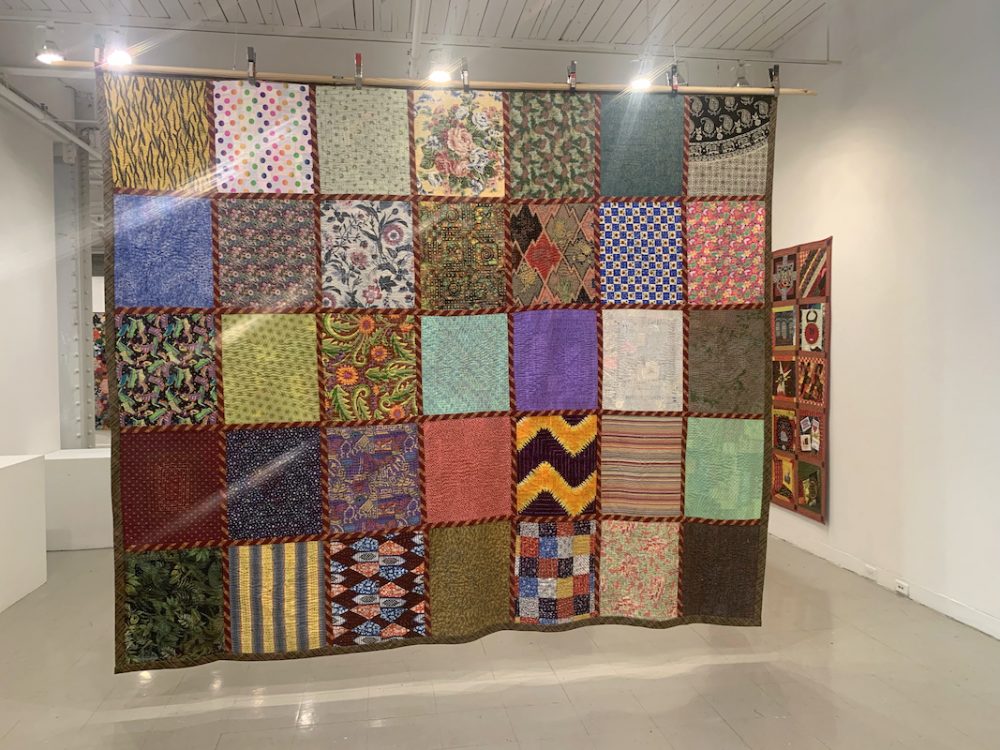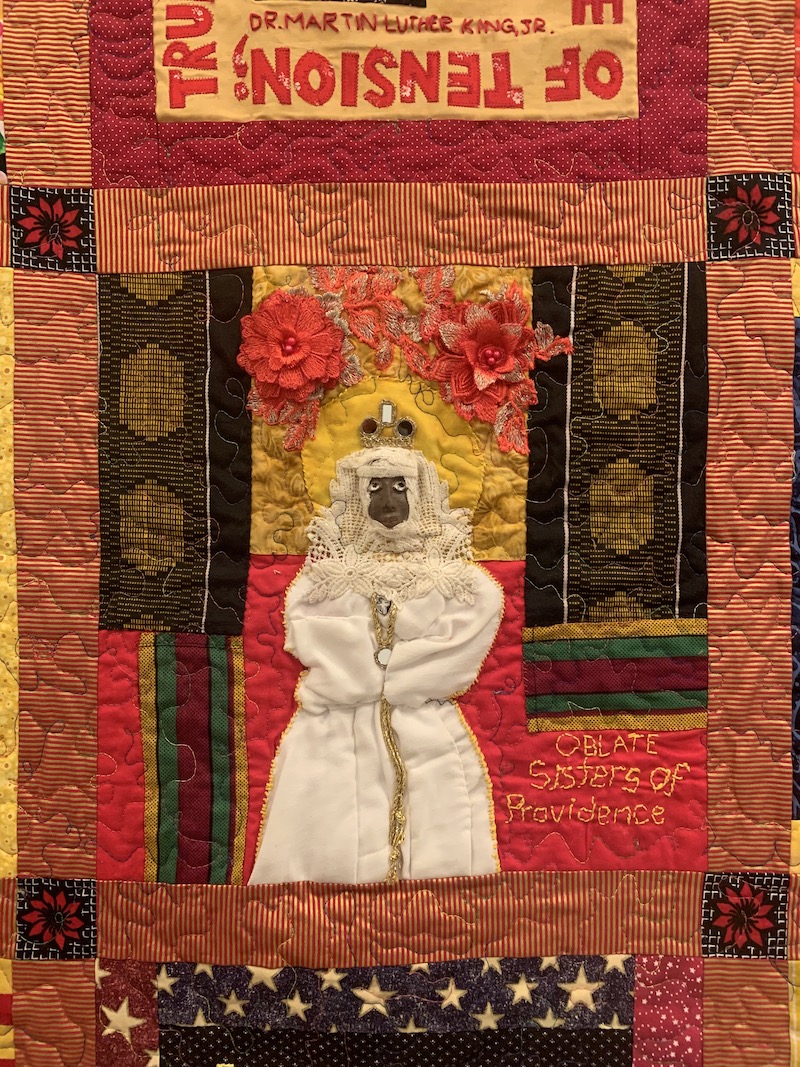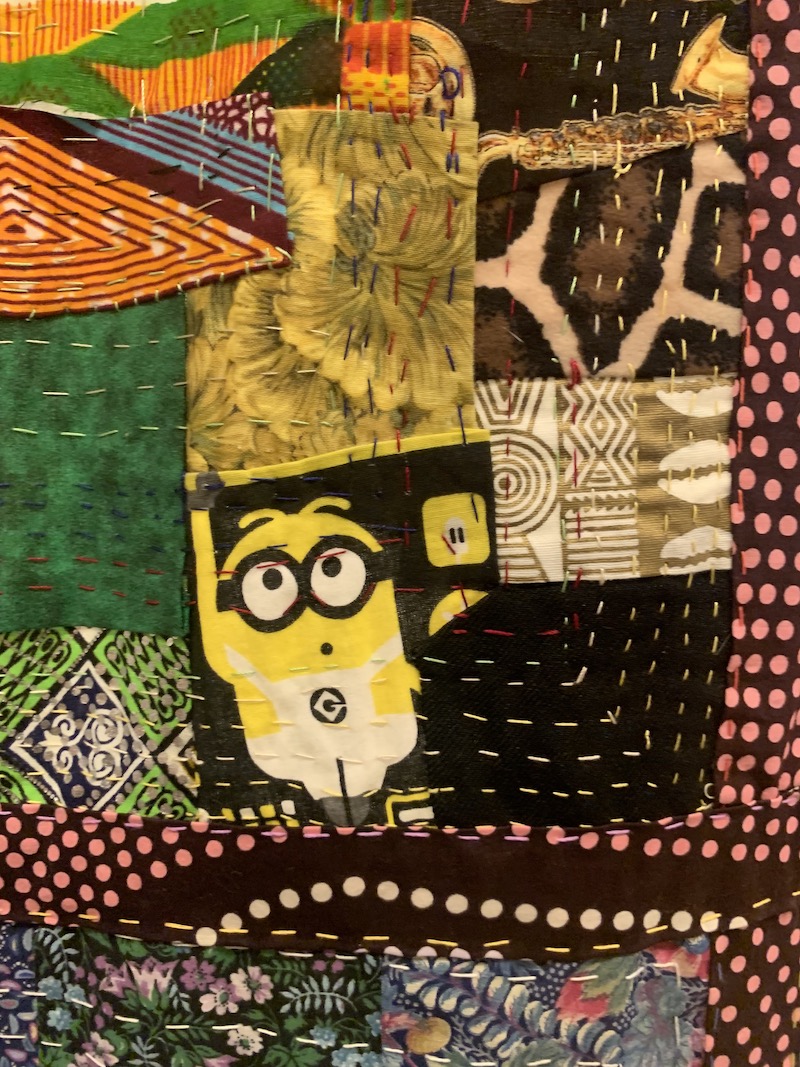When the COVID-19 pandemic broke out in the spring of 2020, The Quilt Club at the Maryland Institute College of Art (MICA) was in full swing. Founded in 2015 by MICA faculty member Susie Brandt, the club is a place where people across MICA’s community—students, faculty, staff, alumni—and those not associated with the school can come together. Between May 2020 and May 2022, the group created 15 quilts. Quilting in the Age of the Pandemic, on view in MICA’s Meyerhoff Gallery, is the first time the quilts have been exhibited.
Featuring 14 of the 15 quilts made during the pandemic as part of the MICA Raffle Quilt Project, these pieces were created remotely but collectively, when the club’s members were scattered across the country in their homes. The Quilt Project began as a fundraiser and raffled its work through the school’s winter Art Market. The first quilt raised over $1,000.
Initially, Quilt Club went on break during the onset of the pandemic. But, as the semester ended, Brandt saw a need for something to continue into the summer. After a number of students expressed interest, the Club was back at it. Members met online for weekly meetings, and used the fabric they had on hand. Brandt carefully assembled packages for anyone in need, providing everything down to the needles. With 76 participants ranging in age from 10 to 82, membership includes people who had never sewn before alongside experienced quilters like Glenda Richardson and Rosalind Robinson, members of the African American Quilters of Baltimore. Although not part of the club herself, Joyce J. Scott introduced Richardson and Robinson to the MICA Quilt Club.
